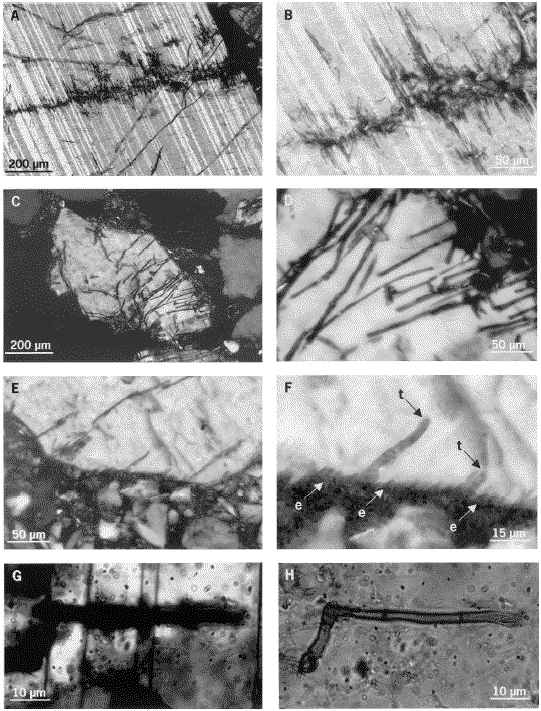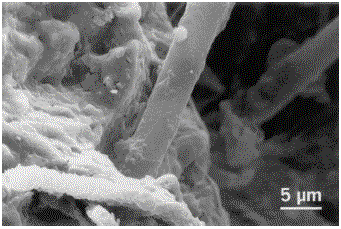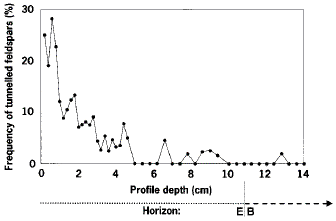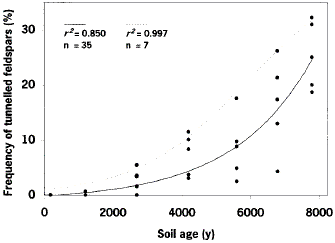
Figure 2. Thin-section micrographs in cross-polarized (A-G) and plain (H) visible light of plagioclase feldspars from Akerback(Aの頭に゜、aの頭に¨)(7800 y). A and B: Parallel-oriented, lens-shaped etch pits in a row, resulting in a sawtooth pattern. B also shows a single etch pit (upper left corner). C and D: Typical nonparallel pattern of feldspar tunneling. Tunnels show a constant diameter and a rounded end. E and F: Tunnel (t) formation at a mineral surface where etch pits (e) had been formed. G and H: Detail of a tunnel colonized by a fungal hypha. The septae of the hypha are clearly visible (H).
図2.Akerback(Aの頭に゜、aの頭に¨)産斜長石(7800年前)の直交ニコル(A~G)と単ニコル(H)下での薄片顕微鏡写真。AおよびB:平行方向に配列したレンズ形エッチピットで、のこぎり歯のパターンとなっている。Bは単一のエッチピットも示す(上左端)。CおよびD:長石穿孔の典型的な非平行パターン。穿孔は一定の直径で丸い終端を示す。EおよびF:エッチピット(e)が形成されている鉱物表面での穿孔(t)形成。GおよびH:菌糸によるコロニーがある穿孔の細部。菌糸の隔壁がはっきり見える(H)。

Figure 3. Scanning electon micrograph showing two fungal hyphae penetrating a feldspar grain.
図3.長石粒子を貫く2つの禁止を示す走査電子顕微鏡写真。
〔『Hoffland,E., Giesler,R., Jongmans,T. and van Breemen,N.(2002): Increasing feldspar tunneling by fungi across a north Sweden podzol chronosequence. Ecosystems, 5, 11-22.』から〕

